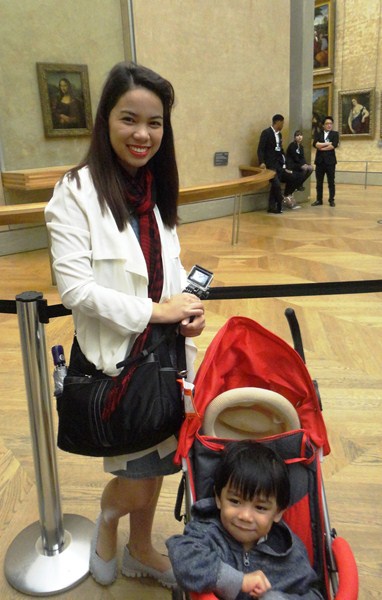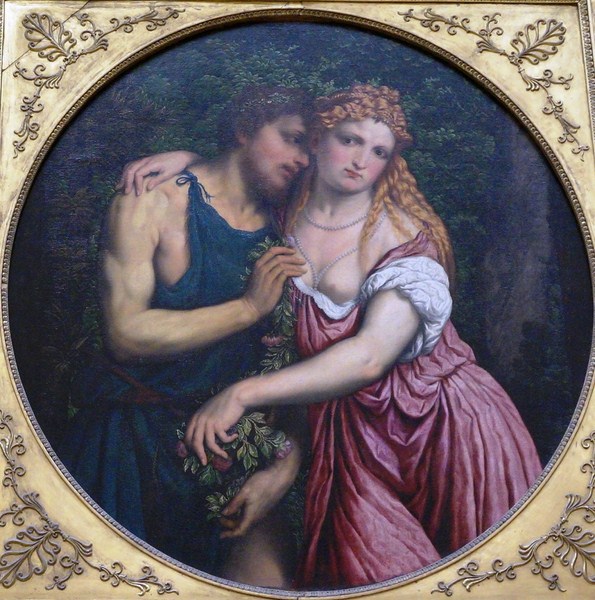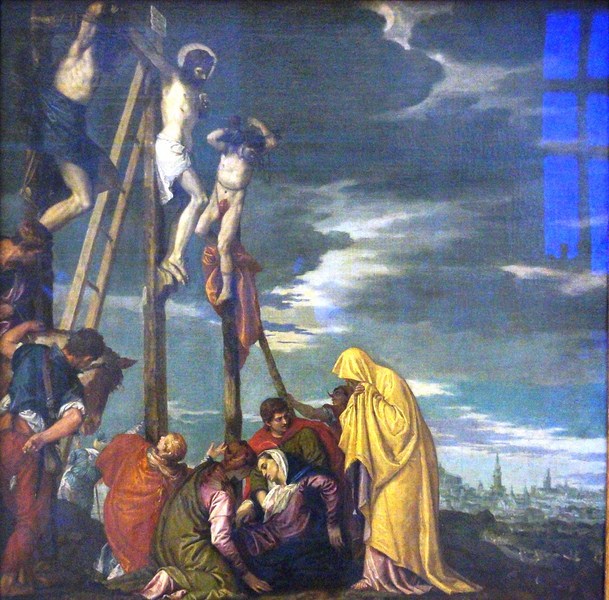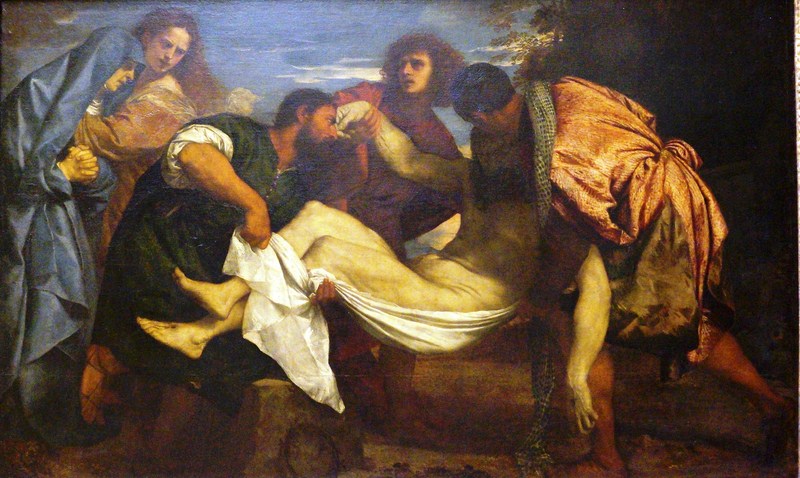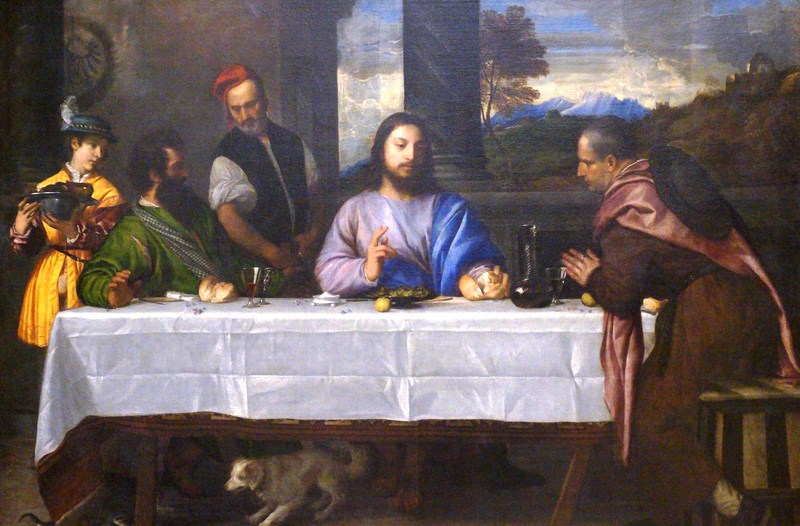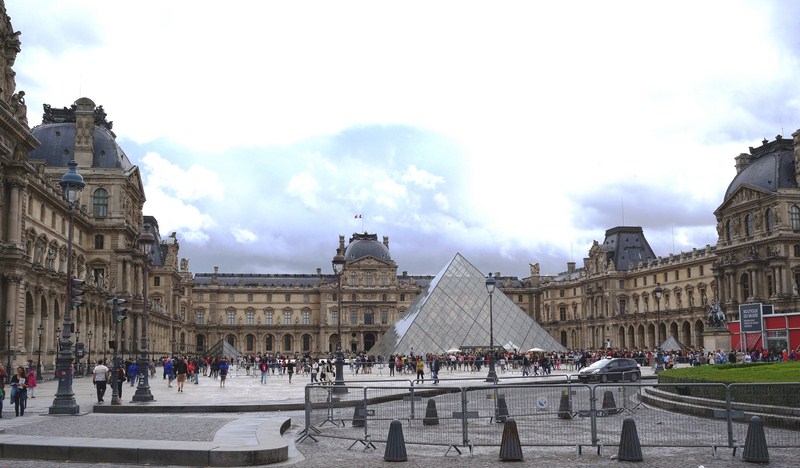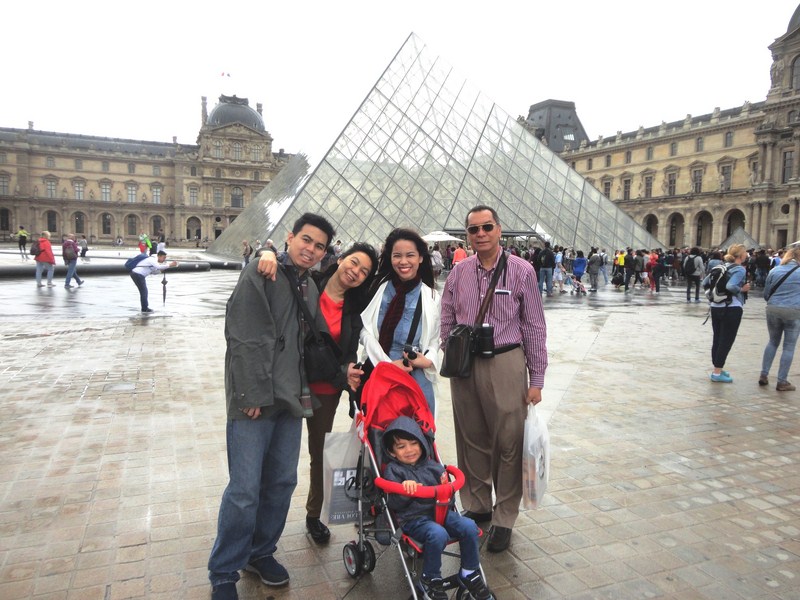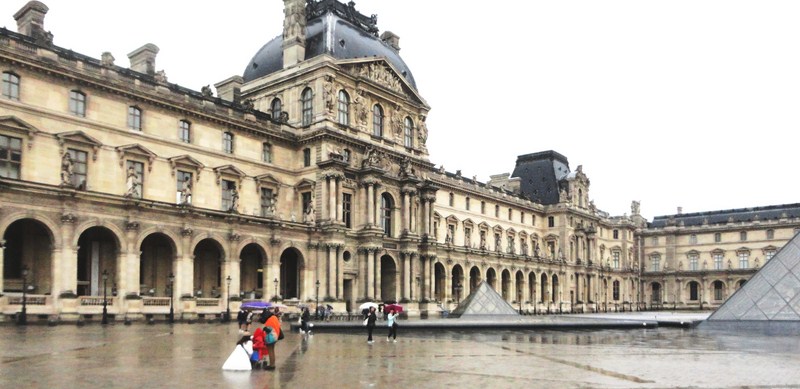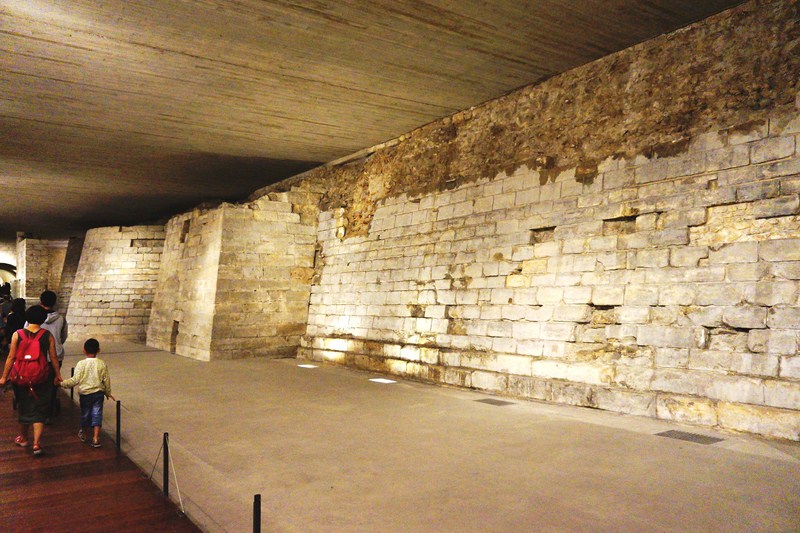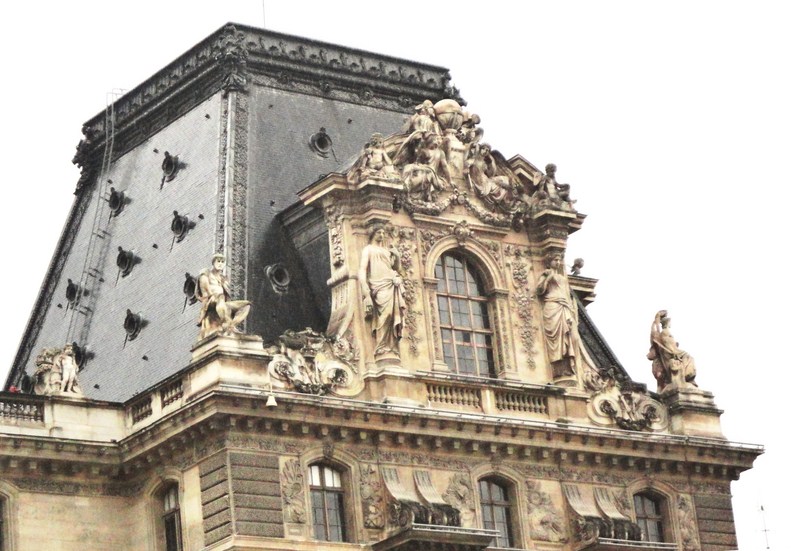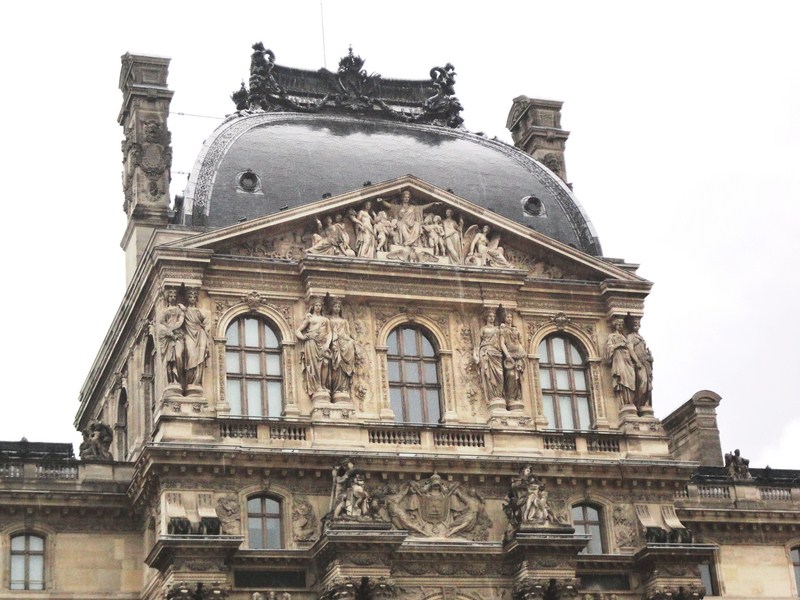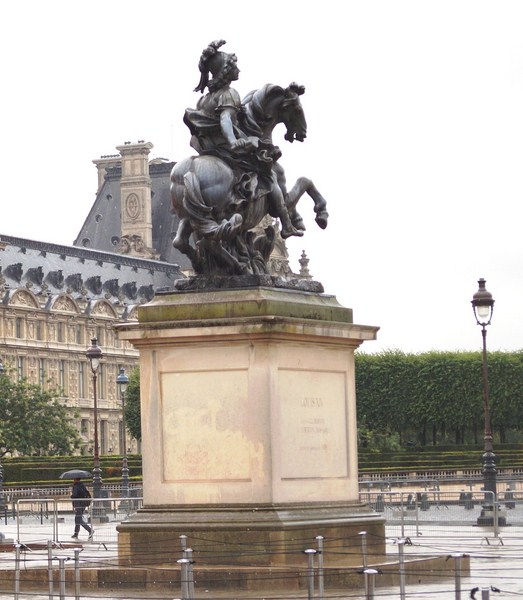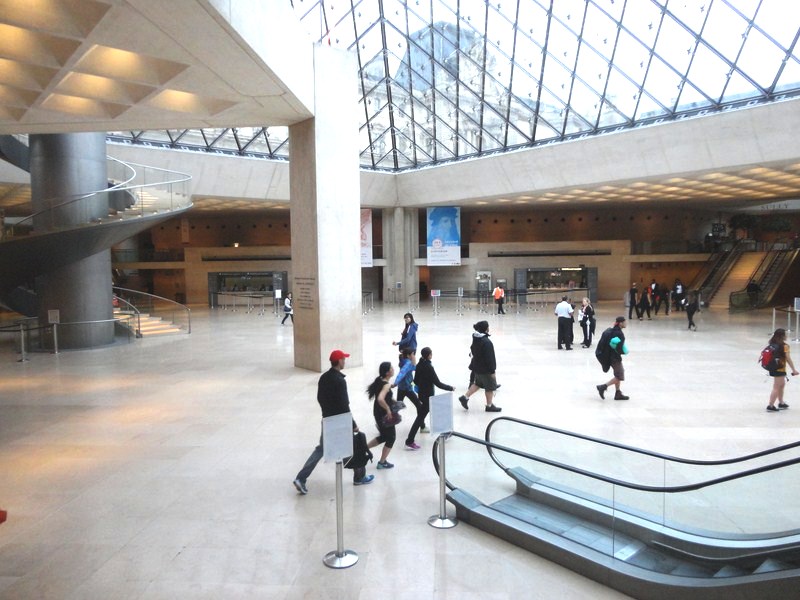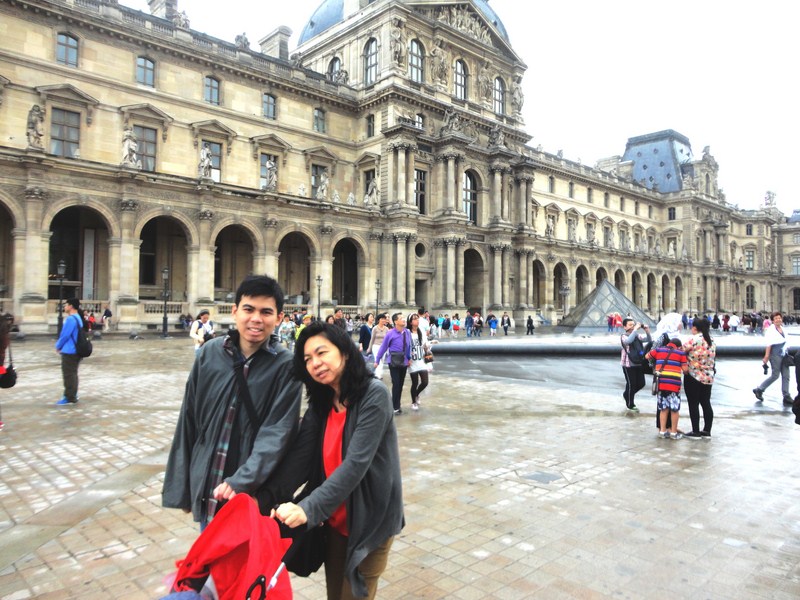The State Room (Salle des États), the Louvre Museum‘s most visited room, is the customary home of Italian artist Leonardo da Vinci’s (the Louvre holds the largest collection of his work) Mona Lisa (also known as the Gioconda, it was painted between 1503 and 1506), the most famous portrait painting of the world which anybody that visits the Louvre Museum for the first time would want to see as if this is the only work that has to be seen.
Actually, some visitors only buy a Louvre ticket just to have a quick glance at the Mona Lisa and to take a selfie. If you enter Le Louvre by the Pyramide you will have to follow a long and slow way to reach the Mona Lisa in the 1st floor,Denon Wing because the stairs passing by the Samothrace Victory statue is usually crowded with visitors. The painting is kind of small, being only 77 cm. × 53 cm. (30 in. × 21 in.).
Check out “Louvre Museum” and “Louvre Museum – Painting Collection“
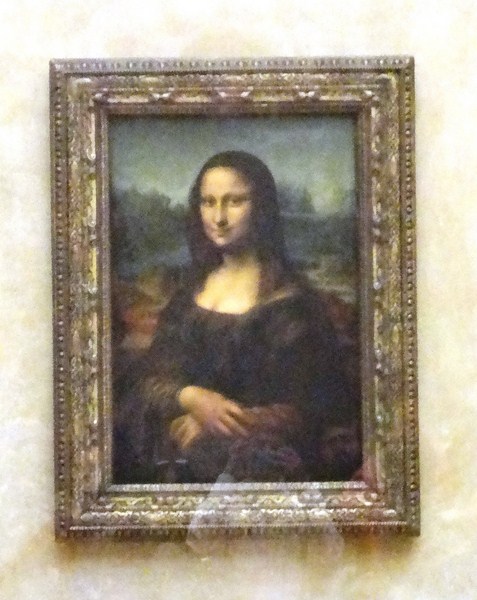
The Mona Lisa (or in French La Joconde, or in Italian La Gioconda) was on permanent display here since 1797.
Francesco del Giocondo, a nobleman, cloth merchant and politician, ordered the painting to thank his wife Lisa Gherardini del Giocondo for giving him two children. Leonardo used the sfumato painting technique, a slow process where the paint is applied in thin layers. After painting one layer on a thin white Lombardy poplar panel, Leonardo da Vinci waited for it to dry, repeating this procedure several times until the painting was completed.

Jandy with the massive Wedding at Cana (or The Wedding Feast at Cana) in the background. An oil painting by the late-Renaissance or Mannerist Italian painter Paolo Veronese, it is the largest painting in that museum’s collection. The piece was commissioned in 1562 by the Benedictine Monastery of San Giorgio Maggiore in Venice, Italy, and completed in fifteen months by the year 1563. It hung in the refectory of the monastery for 235 years, until it was plundered by Napoléon in 1797 and shipped to Paris. The scene depicts a mixture of contemporary and antique details.
That is the main reason why it took him three years to finish it. The painting, characterized by an unprecedented formal audacity, retains an aura of mystery that, generation after generation, still continues to fascinate the crowds of visitors that come to admire Mona Lisa’s famously enigmatic smile.
The painting only became widely famous in 1911 when, while working at the Louvre, Italian carpenter Vincenzo Peruggia stole the canvas, smuggling it out under his overalls. Mistakenly thinking that she had been looted by Napoleon (Leonardo actually had taken the painting with him to France, finishing it there in 1516, three years before his death, before it passed into the collections of King Francis I of France and his successors), like so many other Italian masterworks in the Louvre’s vast collection, he wanted to bring her back to her homeland.
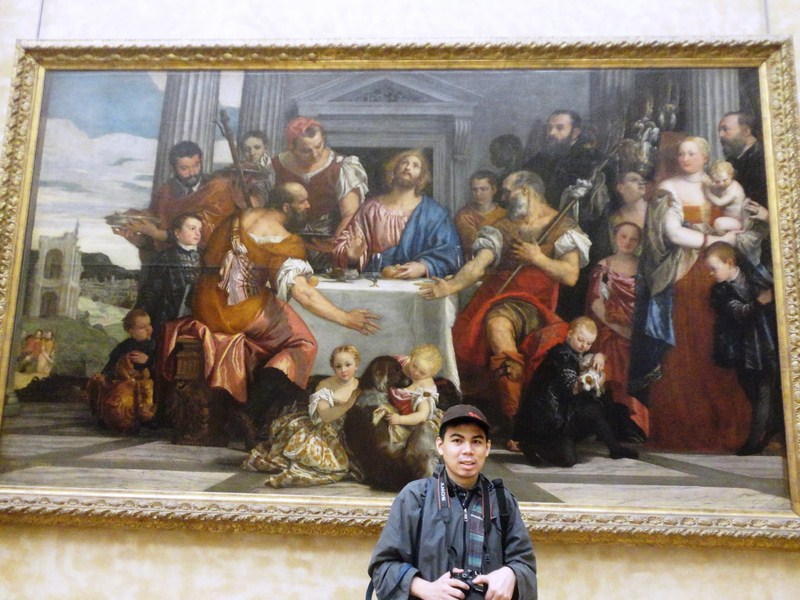
Jandy with Supper at Emmaus of Italian Renaissance painter Paolo Veronese in the background. This 242 cm. x 416 cm. oil painting, dated c. 1559, is the artist’s first large religious work.
Two years later, the painting resurfaced after Perugia tried to sell it to Giovanni Poggi, director of the Uffizi Gallery in Florence where he believed the painting belonged in. Giovanni warned the authorities about the situation. On January 4, 1914, it was returned to the museum.
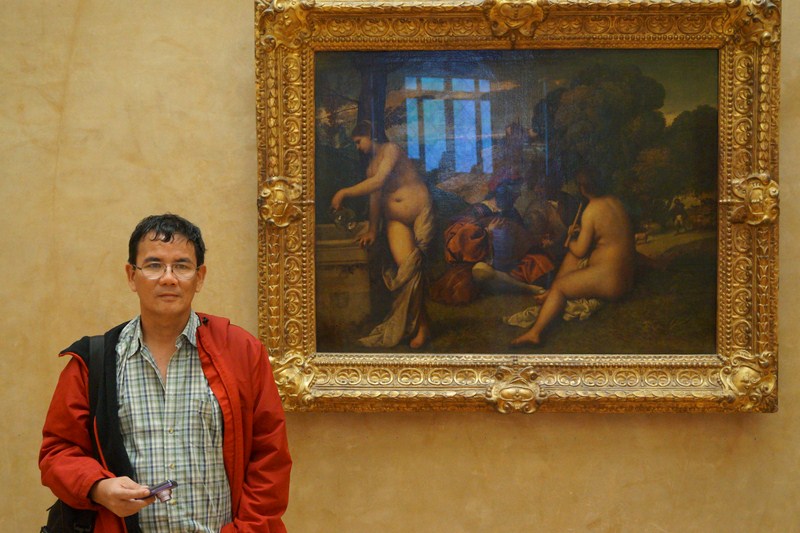
The author beside The Pastoral Concert of Italian Renaissance master Titian. This 105 cm. × 137 cm. (41 in. × 54 in.) oil painting ( 1509) portrays three young people (a naked woman and two men dressed in contemporary costumes) on a lawn, playing with each other. Next to them is a naked standing woman pouring water from a marble basin. In the wide background is a shepherd and, among the vegetation, a far landscape.
The fragile, very rarely handled painting last traveled in 1974 to Russia and Japan, having crossed the Atlantic in 1964 to be shown in the United States despite the fierce protests of the Louvre’s curators. It was moved between 1992 and 1995 and again from 2001 to 2005 during another round of renovations. Daily, about 15,000 to 20,000 visitors seek out the painting.
The Salle des Etats, designed by Lefuel, was built to accommodate the major legislative sessions presided over by Napoleon III from 1859. In 1878, the hall became part of the museum. The original decorations have disappeared, but the recent refurbishment by Lorenzo Piqueras has provided a new setting for the Mona Lisa.
Opposite the Mona Lisa, we also saw The Wedding Feast at Cana. Painted by Paolo Veronese, this huge (6.77 x 9.94 m) painting depicts Jesus Christ’s first miracle, where he, surrounded by 130 feast-goers, turns water to wine. These 2 paintings steal the most of the attention, but they are not the only masterpiece in the room as the room is also home to a number of wonderful Venetian Renaissance paintings.
NOTE:
On July 17, 2019, the Mona Lisa was transferred to the adjoining Galerie Médicis (Room 801, Level 2, Richelieu wing) so that renovation work in the Salle des États can start.
A new secure and air-conditioned showcase has been installed (the Mona Lisa is kept at a constant temperature of 68 degrees Fahrenheit and a hydrometry of 50%).
The 500-year-old painting remained there, protected by bulletproof glass in its temporary home, until the work was completed in the beginning of October just before a blockbuster Leonardo da Vinci exhibition (marking the 500th anniversary of the artist’s death in Amboise) opened on October 24.
The exhibition features a grouping 162 works including loans by Queen Elizabeth II of Britain from the Royal Collection, the British Museum, the Hermitage of Saint Petersburg and the Vatican. However, the painting will remain in its spot and will not be part of the special exhibition.
The State Room: Room 711, First Floor, Denon Wing, Louvre, 75001 Paris, France. Tel: +33 1 40 20 50 50. Open daily, except Tuesdays and holidays, 9 AM- 6 PM (until 10 PM on Wednesday and Friday evenings).
The Louvre has three entrances: the main entrance at the pyramid, an entrance from the Carrousel du Louvre underground shopping mall, and an entrance at the Porte des Lions (near the western end of the Denon wing).
Admission is free, from October to March, on the first Sunday of every month. Still and video photography is permitted for private, noncommercial use only in the galleries housing the permanent collection. The use of flash or other means of artificial lighting is prohibited. Photography and filming are not permitted in the temporary exhibition galleries.
How To Get There: the Louvre can be reached via Metro lines 1 and 7, station Palais Royal – Musée du Louvre Métro or the Louvre-Rivoli stations. By bus, take No. 21, 24, 27, 39, 48, 68, 69, 72, 81, 95 as well as the touristic Paris l’Open Tour. By car, there is an underground parking reachable by Avenue du Général Lemonier, every day from 7 AM – 11 PM.

